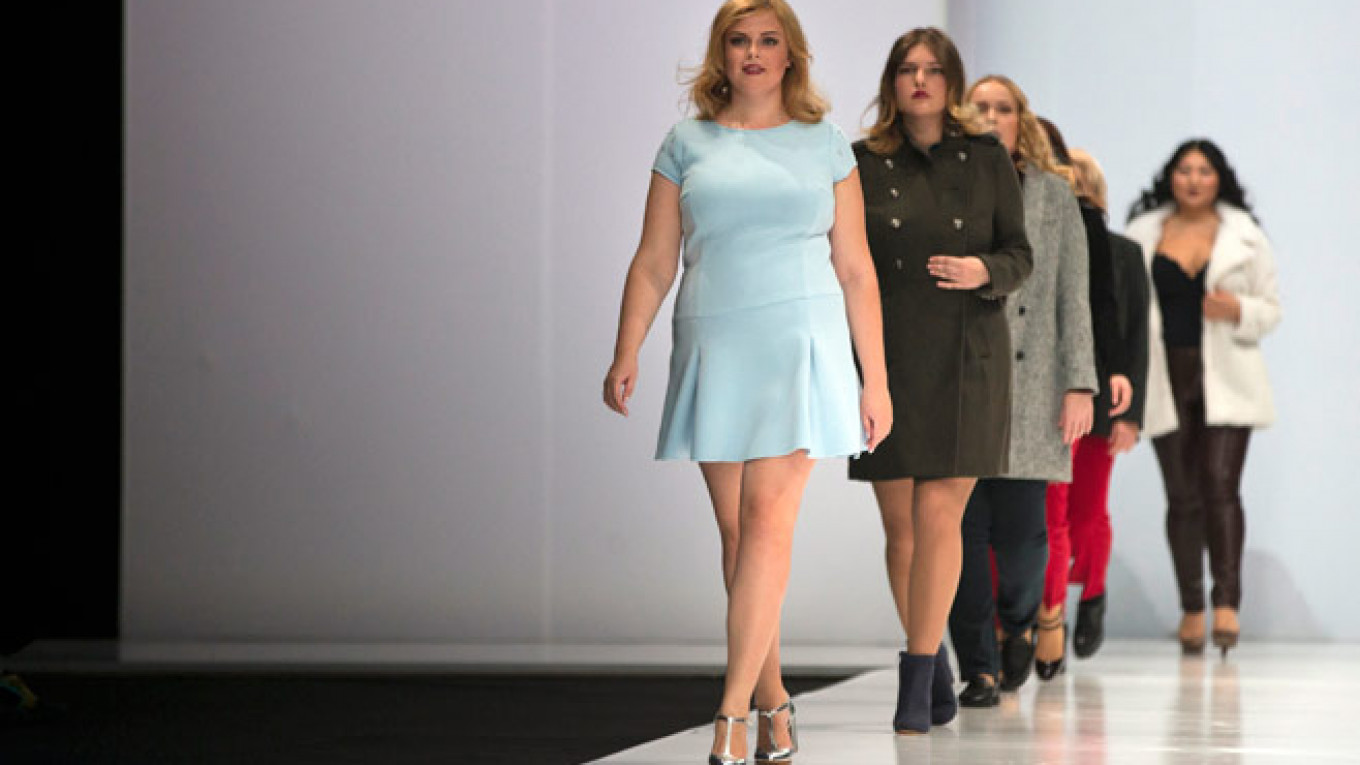In the international world of high fashion, where health is often sacrificed for the sake of a tiny figure, the industry drew in a breath of fresh air this week during the 34th Moscow Fashion Week. Moscow Fashion Week held its first plus-size fashion show as part of weeklong glamorous event. It seems that the Russian fashion industry is joining in on the changing global perception of beauty and opening its doors to full-figured women for the first time.
Plus-Size Fashion Forward
The show was produced by the French online fashion company La Redoute, a multi-line retailer specializing in ready-to-wear apparel and home decor. This year saw the launch of their "Taillissime" line, which they describe as a "trendy plus-size fashion collection." The collection features everything from elegant dresses to sharp tailored suits, all designed to flatter women of larger sizes. The collection is colorful, versatile and fun, and it breaks the strict rules that international fashion events usually enforce.
When asked why "La Redoute" was chosen to produce such a show, Artyom Krivda, producer of Moscow Fashion Week, told the The Moscow Times: "Today, very few international and Russian brands produce clothes in larger sizes. La Redoute specializes in this like no one else and makes, in my opinion, an excellent collection in which every woman feels trendy, up-to-date and most important — very feminine."
Another unusual element of the show was that it featured real Russian women strutting alongside professional models. The only telltale sign of who was professional and who was not were the levels of rapturous applause the girls received from friends and family at the end of the runway. The casting process for the vivacious models began in early summer as part of the "Plus-Size Fashion Weekend" project. The event celebrated the larger women of Russia, a country where the average size is 52 (U.S. Size 22) despite its association with size 0 models. The social messaging service Viber sponsored the event and helped to gather applicants from all over Russia to take part in a competition to model in this year's Fashion Week. The only prerequisite was being size 48 or larger. The competition received applications from over 80,000 women, 500 of whom were invited to audition live. Out of those women judges chose the small group who participated in the La Redoute show.
Fixing a Troubled Industry
Russia has long been identified with the modeling industry, as many of the world's most successful and striking beauties have been scouted here. However, in recent years the industry has received a lot of bad publicity with tales of corruption, eating disorders, extortion and abuse of young girls. In 2011 the award-winning documentary film "Girl Model" made headlines when it opened up the world of model scouting to the public. The documentary follows Ashley, a model scout recruiting young Siberian girls to model in Japan, and Nadya, a recruited 13-year-old who gets financially taken advantage of during her modeling work.
Further shadows were cast on the industry after a string of deaths and suicides among young Russian models a few years ago. Most notable among them was Ruslana Korshunova, a Russian supermodel who plunged from her luxury apartment in Manhattan when she was only 20 years old. Peter Pomerantsev in his book "Nothing is True and Everything is Possible" suggests that Korshunova may have been depressed and desperate to get out of the fashion industry but wasn't given the freedom to do so by her Russia-based management company.
In 2012 the industry took another hit when another Russian supermodel, Kira Dikhtyar, revealed the extreme lengths models go to to remain slim. In a live interview with Fox News, Dikhtyar explained that her peers have relied on "packs of cigarettes, daily colonics, laxatives, phentermine diet pills, Adderall and prescription drugs that suppress the appetite" to refrain from eating. She also said that "all kinds of injections are becoming more and more popular, from HCG injections — human chorionic gonadotropin, a hormone that women produce during pregnancy — that go with a 500-calorie diet plans, to T3 thyroid injections that healthy models inject in an attempt to speed up their thyroid function, which results in a faster metabolism."
But after a rocky five years of bad publicity, the Russian fashion industry seems to be recovering. The inclusion of larger women into official fashion events means that Russia is following suit in the global revolution of women's beauty ideals. As Artyom Krivda said, "Fashion is for everybody! For me it was important to show maximum tolerance to all the participants of the 34th Fashion Week in Moscow. Plus-size fashion has been included in the program, because all people, regardless of age, gender, race and weight, can be fashionable."
Contact the author at artsreporter@imedia.ru
A Message from The Moscow Times:
Dear readers,
We are facing unprecedented challenges. Russia's Prosecutor General's Office has designated The Moscow Times as an "undesirable" organization, criminalizing our work and putting our staff at risk of prosecution. This follows our earlier unjust labeling as a "foreign agent."
These actions are direct attempts to silence independent journalism in Russia. The authorities claim our work "discredits the decisions of the Russian leadership." We see things differently: we strive to provide accurate, unbiased reporting on Russia.
We, the journalists of The Moscow Times, refuse to be silenced. But to continue our work, we need your help.
Your support, no matter how small, makes a world of difference. If you can, please support us monthly starting from just $2. It's quick to set up, and every contribution makes a significant impact.
By supporting The Moscow Times, you're defending open, independent journalism in the face of repression. Thank you for standing with us.
Remind me later.






